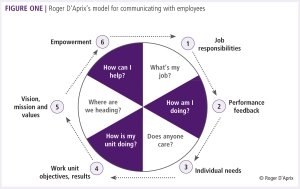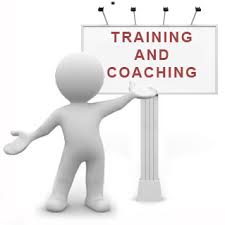
I’ve been to quite a few seminars, conferences, events that have had social media and specifically LinkedIn as a topic. I had a really interesting conversation with a LinkedIn trainer and attended a Recruitment Society Event in London where it was the main topic. So, that’s what’s prompted this post.
I’ve been utilising it for 8+ years now, but until a few years ago I’d never had to use it for sales. So my policy was that I had always only connected with people that I knew and had actually worked with / trained. This made for a very robust network and when people came to me to introduce them to my connections, or even my connections, connections. It worked… for me.
That all changed when I got back into a sales role for APSCo, helping them to increase their membership in the Midlands. I changed my policy and started accepting invites from people that I didn’t know.
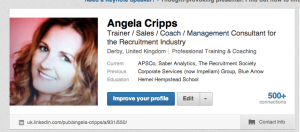
In February 2013 I launched my own business that I’ve had for 13 years, Connemara UK Ltd. I’d never used the name and although I already had quite a robust network (just under the 1,000 connections or so) I decided to set myself a target of an extra 100 connections for 4 weeks. I had work booked up until after Easter, so I thought I’d see what LI could do for me… without doing any sales calls. I made sure my profile was up to date and I had recommendations and endorsements for the work that I wanted to focus on. I’ve written 20+ different induction and engagement programmes for companies, I had lots of written recommendations, but only a couple of endorsements… so I asked for more.
On Wednesday of week 4 of my experiment, I was only 1 person off of my 400 hundred target. Amazing, especially as I hadn’t had to search for any connections… it’s all organic from the work I’d been doing in the first 3 weeks.

So how easy is it for anyone to increase their network like this, what was my strategy and what results did it bring?
Top 10 tips
1. Basic and logical, but not actually something that I’d done in the past, so I wonder how many others haven’t really utilised LI. I did an advanced search on MD (Title) Recruitment (Key word) 50 mile radius of my home town. With 2,236 results, it was certainly a great place to start, with nearly half either only 1 connection away or in a group that I belong to.

2. I went to the groups that I belong to and connected with these people. Just one of these groups had 125,000 members and I’m still only connected to 374 from all of my groups, so I’ve got a long way to go, because I’ve only just touched the tip of the iceberg with 1 group out of 39!!
3. I follow the group rules! I hear annoyance from so many people, including myself, whereby recruiters just fill up the discussion timeline with job postings… it’s not what we want to see or have multiple emails about.
4. I manage a group (The Recruitment Society) that is lucky enough to have about 20 people a day joining it. So set up your own group, get people interested and make sure that when you accept them, send them an additional welcome note through a connection request.
5. Send the invites in the evening, with a personalised note starting with “Good evening”. It shows that you’re willing to go the extra mile and put the work in to build your network, but also (and more importantly) it doesn’t get in the way of your sales time – although I’m doing sales calls to Singapore at the moment, so that is middle of the night stuff!!
6. Write or re-post interesting articles and discussions. Put your views and feelings on there. In other words, give a bit of yourself.
7. Comment on other people’s articles. 1 client approached me as they looked at my LI profile after I’d made a comment – what an easy way to get in front of your clients.
8. Make sure you’ve got recommendations and endorsements for the work that you want to do.
9. Be polite. Be courteous. Basic, but also missing in a lot of requests that I get. That also relates to your photo. I actually find some photos offensive! Sometimes it’s just the look on someone’s face that makes me think less favourably of them – maybe it’s because I’m a ‘visual’ type personality.
10. Above all don’t lie! Not a great way to start the relationship. I’m amazed at how many friends I’ve actually got. My initial reaction when I get a request that says someone is my friend is to want to shout at the laptop “NO, you’re not. I’ve never met you in my life!!” Delete follows very quickly. LI sent a request for me recently without me being able to add a personal note – I immediately wrote to the person’s email and apologised.
What’s been the impact?
Well the visibility of my profile has certainly changed. I was already in the top 1% of profiles viewed in 2012 (or so LinkedIn told me), but the graph speaks for itself. 30 – 40 views was quite normal per week for me… not now.

Also, you can see the increase of appearances in searches where I started to ‘sell again’, but even with Christmas and New Year, the 3 months to Mid March has increased by 50%.


So apart from profile, what are the actual business results?
In the first 3 weeks I had 7 companies approach me to utilise my services. 2 of these were companies that were linked to recruitment, that would like me to promote their business and take a % (which I don’t do) and the other 5 wanted Connemara UK to help them with projects, that they just happened to be organising this month. So my sales calls to the Directors have actually been 30 minutes+ each time and with clients already wanting my services – how easy is that? I’ve not had one “No” from these clients.
So in summary, I can understand why everyone raves about LinkedIn for the recruitment industry. What a sales tool… it does all of the leg work for you and you can do it every moment you have some spare time.
Update: July 2016
I wrote this blog 3 years ago and am glad to say that I have still not had to do any ‘cold calling’ as such and all of my work in the last 3 years can be attributed to LinkedIn in some way, shape or form.
This year I focussed on utilising LinkedIn to create international work for me. I used the same hints and tips that I’ve shared here and in numbers terms, I’ve connected with nearly 400 international recruitment directors, and set up 25 meetings in 5 different counties this summer, with 12 proposals for work. It doesn’t matter where you’re based, this works anywhere in the world.
My connections keep growing and my recommendations and endorsements still come in every week. I think one of the biggest impacts was writing a blog of useful information each week and sharing it with my LinkedIn groups. It was always targetted to be informative and I never sold myself or my company.
I’m getting closer to 5,500 connections now and have to say no, more than I say yes, to people wanting to connect with me. I still stick to just relevant connections.
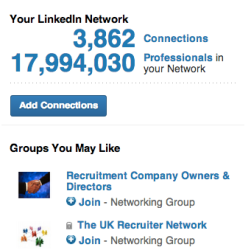
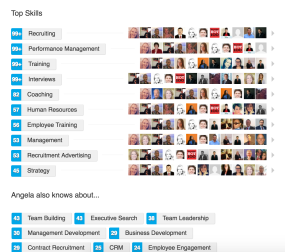
Angela Cripps, MD http://www.connemarauk.com

 Quarterly business plans (QBPs) work so well in recruitment. As with the four seasons, recruitment trends change considerably throughout the year, so planning in detail for more than 3 months at a time, can sometimes be counter productive.
Quarterly business plans (QBPs) work so well in recruitment. As with the four seasons, recruitment trends change considerably throughout the year, so planning in detail for more than 3 months at a time, can sometimes be counter productive.




